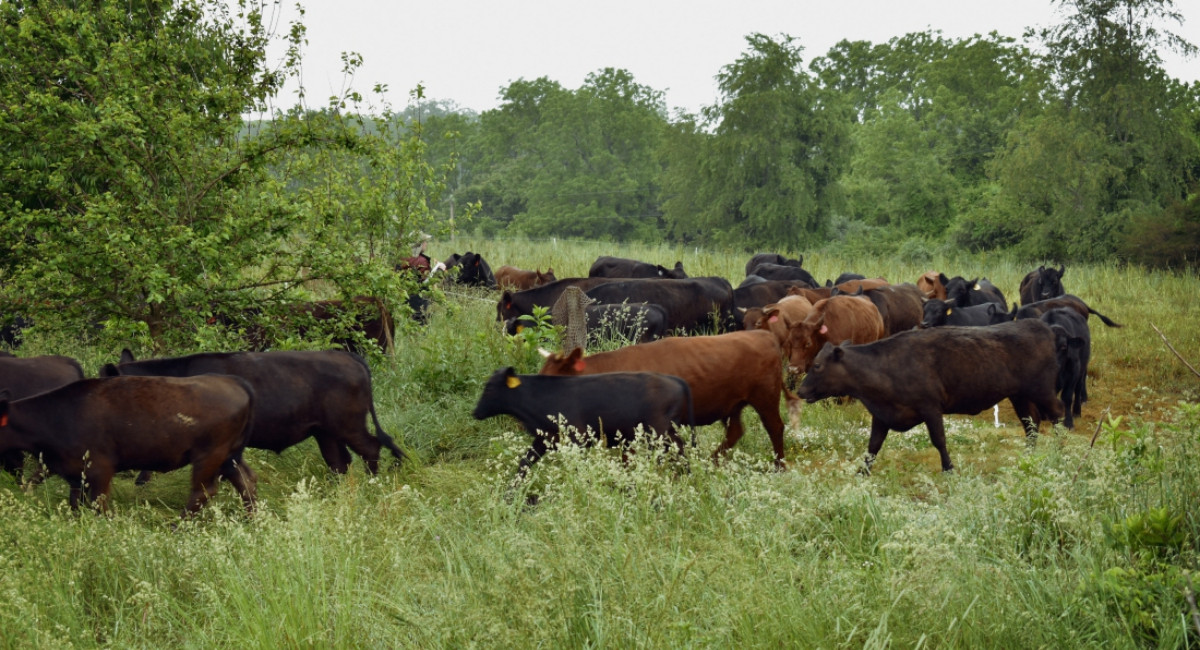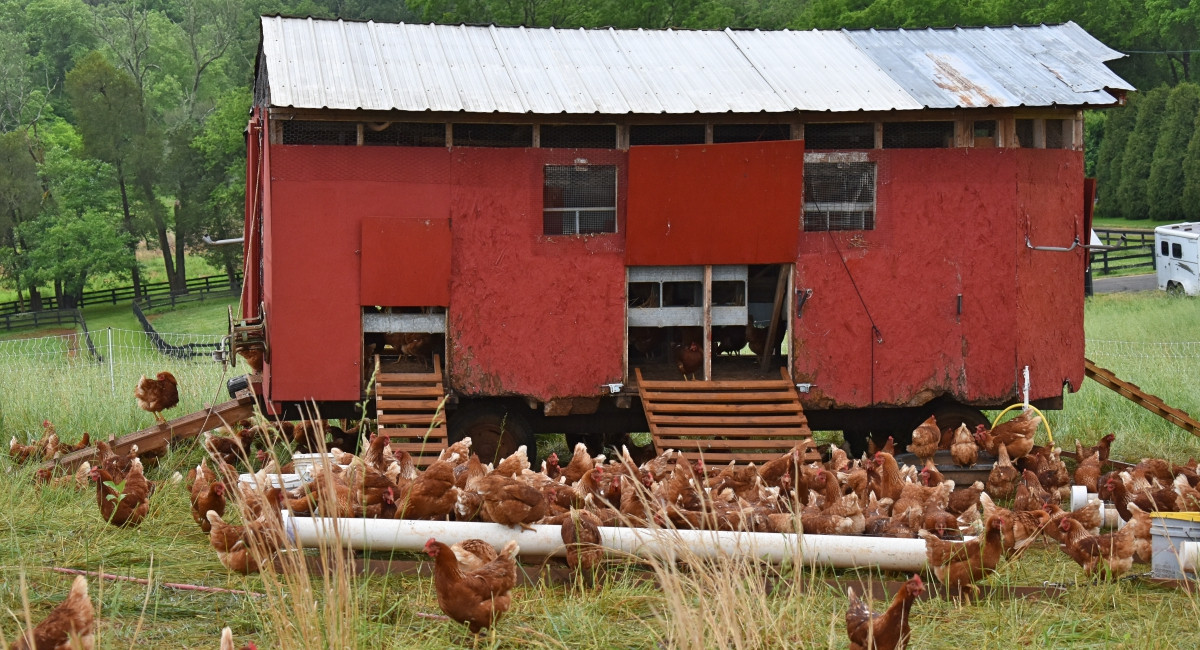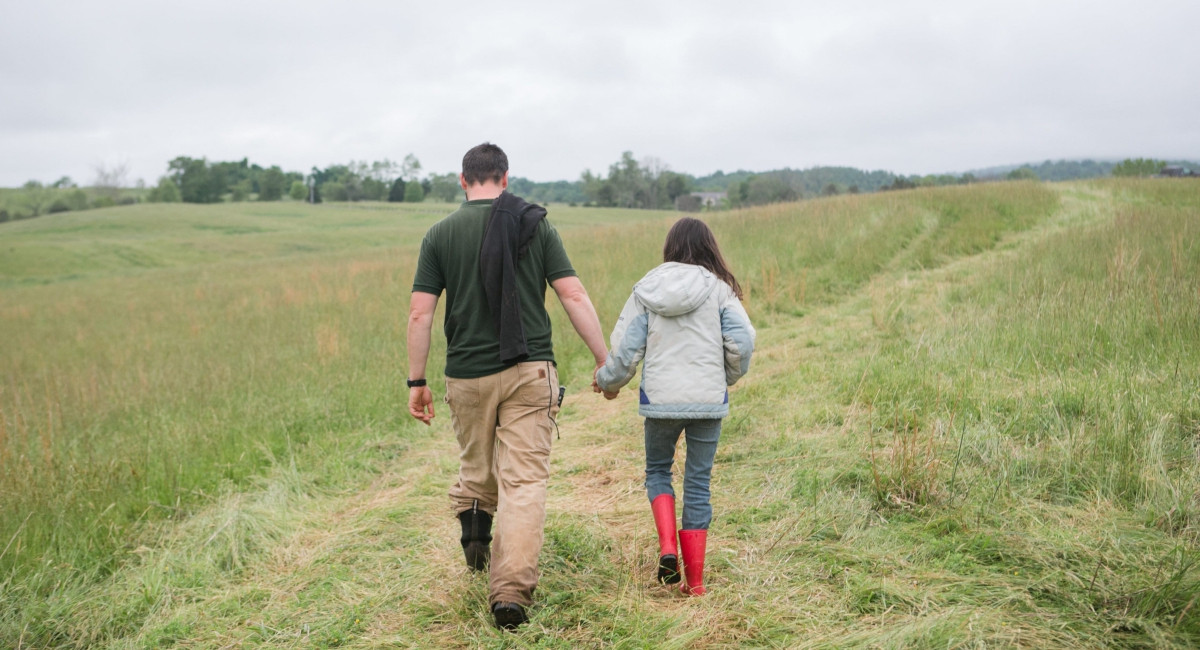
CONVENTIONAL FARMING practices often work against the nature of land and animals.
Pastures are overgrazed, animals are stressed, and toxic feed and chemicals are used to save money and band-aid the systemic problems. This all creates an ecological disaster that leaves our land infertile, our animals miserable, and our food lacking nutrition and containing toxins.
Here, we do things differently. Our farming practices aim to collaborate with nature, in a way that benefits everything involved-- land, animals, and people. To collaborate in this way, it is critical to recognize and facilitate the natural cycle found in all healthy ecosystems: movement, nourishment, then rest.
HOLISTIC FARMING works with nature. And that is our goal, too.

Movement is what most farmers are not doing because it is labor-intensive and risky. It takes a lot of work and planning and intelligence to move animals around fresh pasture. Mobile infrastructure is vulnerable. Stationary steel and concrete buildings give a lot of control and labor saving-- but they give up the things that provide animals and land a natural system of life and health. Movement is what nature asks of us. And we work hard to make it happen, so that everyone and everything benefits, start to finish.

Naturally, animals are designed to be on the move towards clean ground and fresh forages

Regular rotational moves using mobile shelters and paddocks gives access to fresh ground, new foraging, and grasses
Our meat chickens move to fresh pasture daily
Our egg-laying hens move to fresh half acre paddocks 3 times per week
Our cattle move to fresh pasture every 1 to 3 days

Flocks and herds nourish the land--the land provides nutrition to our animals that ends up in our food

We utilize the natural grazing of our animals to stimulate and fertilize the land
As the land is nourished, each flock and herd can access greater amounts of nutrition in the forages and soils
Well-managed land and animals do not need chemical interventions to control weeds, pests, or diseases. This means we keep those poisons out of our food.

Periodic animal impact is beneficial, but land needs to rest properly to metabolize that impact

We give our lands an average of 30 to 90 days of rest before they are grazed again which allows for the land to metabolize the stimulation and fertilization of the animal impact, which in turn allows the land become even more fertile
These periods of rest prevent pathogens from having a stationary and easy host, thereby naturally breaking up pathogen cycles. This is why we don't need chemical wormers or antibiotics.
The outcomes that make our
process worthwhile for you
⚘
Nutrient-Dense
Regenerative farming makes our lands healthier each year. Healthy land yields healthy animals, and superior nutrition for you and your family. What is more important to your health than the things you put in your mouth three times per day that become you?
☢
Toxin-Free
Our natural cyclical management of our land and animals means we don't use toxic chemicals and GMO's. You can rest easy knowing you aren't putting chemicals that are meant to kill biology in your body.
☍
Direct from the source
You will be happier knowing who is raising your food and that you can truly trust us to raise it the way you see and hear from us.
☻
No guilt, just happiness
Fully enjoy the knowledge that your food choice is benefiting your loved ones, the land, animals, the farmers, and our community!
Our Farming Partners
We raise and sell chicken, pork, turkey, eggs, and beef. Check out all of our Farming Partners who raise what we don't raise, and who fill in the gaps of our production
BEEF/ CATTLE
Is your beef 100% Grass Fed?
Yes
What Breed of cattle?
Almost all red angus. They are bred by a local breeder who is raising beef cattle to thrive in our context of 100% grass, no antibiotics, and no chemical wormers.
How many cattle?
We usually have 120-200 head of cattle, depending on the time of year.
PORK/ PIGS
Details on Pasture Pork?
Moved to fresh pasture or woods regularly–about acre paddocks every 7-14 days. Non-GMO feed, no antibiotics, no chemical wormers.
What kind of pasture?
Woods and brush and our perennial grass pastures
What breeds of pork?
mostly crosses of Yorkshire, Hampshire, Duroc, Large Black, Old Spot. Bred to thrive in our model of regenerative farming–to do well outdoors, without antibiotics, good at foraging.
Age slaughtered?
7-9 months old.
What is pastured pork?
Pigs raised on fresh pasture or woods.
How many pigs do you have?
It depends on the time of the year, but around 60-120 at any given time.
TURKEYS
What breed are your turkeys?
Broad Breasted Whites
What do you feed your turkeys?
Non-GMO, no antibiotic feed.
HENS/ EGGS/ CHICKEN
What breed are your egg layers?
Red sex-links
How many egg layers do you have?
About 2800
What do you feed your egg layers?
Non-GMO, no antibiotic feed.
What breed of meat birds do you have?
Cornish Cross and Royal Reds
What is a "Cornish Cross" chicken?
The standard meat breed of chicken.
What is a "Heritage Cross" chicken?
A cross of a heritage chicken with a Cornish Cross.
What do you feed your meat chickens?
Non-GMO, no antibiotic feed.
RABBIT, DUCK, LAMB
Where is the rabbit from?
A local friend here in Fauquier County.
Where is the duck from?
A former intern who is in Staunton, VA
Where is the lamb from?
A former intern who is in Staunton, VA
MISC.
Where are all the animals?
At Whiffletree and/or our other 5 farms we rent within 25 miles of Whiffletree
How many acres of land do you have?
Whiffletree Farm is 82 acres. We rent an additional 500 acres from other farms. How many acres of land do you have?
Isn’t soy bad?
An important distinction is that the soybeans in our feed are non-GMO and not sprayed with toxic chemicals, and they are roasted, which mitigates the nutrient-blocking aspects of soybeans. Also, other legumes that are used in soy-free feeds also have some of the same issues as soybeans, so it is not a simple issue.

